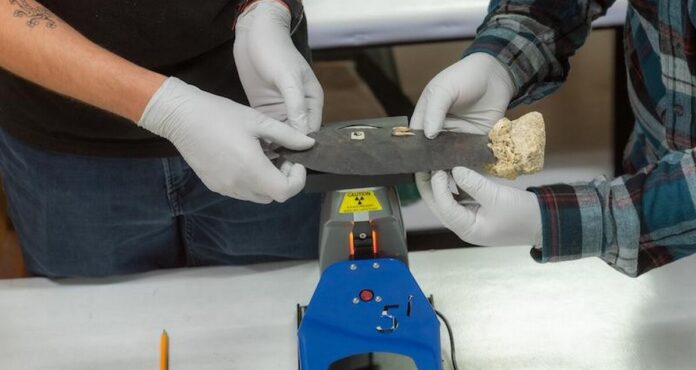A new research study has shed light on the extensive trade networks of the Mexica Empire, a warlike civilization that once flourished in central Mexico.
The study, conducted by researchers at Tulane University and the Proyecto Templo Mayor in Mexico, analyzed 788 obsidian artifacts excavated from the Templo Mayor of Tenochtitlan, the main temple and core of the Mexica Empire located in what is now Mexico City.
Obsidian, a volcanic glass used for tools and ceremonial objects, was a crucial resource for the Aztecs. The researchers found that while the Mexica primarily used green obsidian from the Sierra de Pachuca source, they also acquired obsidian from at least seven other locations, including regions beyond their political borders.
The findings suggest a sophisticated economy that relied not only on conquest but on active long-distance trade, even with rival polities. The analysis showed that nearly 90% of the obsidian artifacts in the sample were made with Sierra de Pachuca obsidian, prized for its green hue and symbolic connection to the mythical city of Tollan.
A smaller but significant portion of the obsidian came from places like Otumba, Tulancingo, Ucareo, and El Paraíso, some of which lay outside the control of the Mexica Empire. These materials were more commonly used for tool production and found in the construction waste piles, indicating that these obsidian types were available to the general population through local markets at low prices rather than being tightly controlled by the state.
The study also tracked how obsidian use shifted over time, from the city’s earliest phases around 1375 CE through its fall in 1520 CE. During the empire’s early phases, more variety in obsidian sources appeared in both ritual and everyday objects. After the Mexica consolidated power around 1430 CE, obsidian for ritual purposes became almost exclusively sourced from Sierra de Pachuca, suggesting growing religious standardization and centralized control.
“This kind of compositional analysis allows us to trace how imperial expansion, political alliances, and trade networks evolved over time,” said lead author Diego Matadamas-Gomora, a PhD candidate in Tulane’s Department of Anthropology.
The research was made possible through a partnership between Tulane and Mexico’s Proyecto Templo Mayor of the National Institute of Anthropology and History (INAH), with artifacts analyzed using portable X-ray fluorescence (pXRF), a non-destructive method that identifies the geochemical fingerprint of each artifact.
“This work not only highlights the Mexica Empire’s reach and complexity but also demonstrates how the archaeological sciences can be leveraged to study ancient objects and what they can tell us about past cultural practices,” said study co-author Jason Nesbitt, an associate professor in Tulane’s Anthropology Department.
Source: Good News Network




